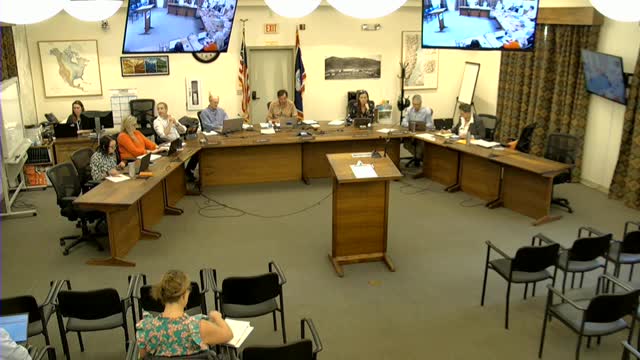Town and county clash over budget and revenue strategies
July 01, 2024 | Teton County, Wyoming

This article was created by AI summarizing key points discussed. AI makes mistakes, so for full details and context, please refer to the video of the full meeting. Please report any errors so we can fix them. Report an error »

In a recent government meeting, officials discussed critical funding measures aimed at addressing the financial needs of the Justice Center and the town's budget. The conversation centered around six key questions regarding proposed tax increases and budget allocations.
The first topic was the potential implementation of a 1-penny sales tax specifically for the Justice Center, alongside a proposed 2% increase in the lodging tax. The town's proposal for the lodging tax was a significant point of contention, with discussions on the revenue split between the county and the town. The county suggested a 60-40 split, while the town proposed a 65-35 division, compared to the current 54-46 split.
Another critical question raised was whether any changes to the revenue split would depend on voter approval of the proposed 7th penny sales tax. The duration of the tax was also debated, with the county advocating for a duration aligned with the 7th penny measure, while the town suggested a fixed term of ten years.
The meeting also touched on the need to revisit Joint Powers Agreements (JPAs) and explore options for restructuring joint departments, including the possibility of contracting services or creating independent agencies. This discussion highlighted the complexities of managing shared services and the financial implications for both the county and the town.
Officials emphasized the urgency of addressing the first two questions by July 17, which focus on the 7th penny sales tax for the Justice Center and the lodging tax increase. The broader context of these discussions reflects ongoing budgetary pressures faced by the town, which has seen a significant increase in its general fund budget, largely driven by rising personnel costs in joint departments.
As the meeting concluded, officials acknowledged the need for a collaborative approach to resolve these financial challenges, stressing the importance of prioritizing revenue generation without complicating the process further. The outcome of these discussions will be pivotal in shaping the financial landscape for both the county and the town in the coming fiscal year.
The first topic was the potential implementation of a 1-penny sales tax specifically for the Justice Center, alongside a proposed 2% increase in the lodging tax. The town's proposal for the lodging tax was a significant point of contention, with discussions on the revenue split between the county and the town. The county suggested a 60-40 split, while the town proposed a 65-35 division, compared to the current 54-46 split.
Another critical question raised was whether any changes to the revenue split would depend on voter approval of the proposed 7th penny sales tax. The duration of the tax was also debated, with the county advocating for a duration aligned with the 7th penny measure, while the town suggested a fixed term of ten years.
The meeting also touched on the need to revisit Joint Powers Agreements (JPAs) and explore options for restructuring joint departments, including the possibility of contracting services or creating independent agencies. This discussion highlighted the complexities of managing shared services and the financial implications for both the county and the town.
Officials emphasized the urgency of addressing the first two questions by July 17, which focus on the 7th penny sales tax for the Justice Center and the lodging tax increase. The broader context of these discussions reflects ongoing budgetary pressures faced by the town, which has seen a significant increase in its general fund budget, largely driven by rising personnel costs in joint departments.
As the meeting concluded, officials acknowledged the need for a collaborative approach to resolve these financial challenges, stressing the importance of prioritizing revenue generation without complicating the process further. The outcome of these discussions will be pivotal in shaping the financial landscape for both the county and the town in the coming fiscal year.
View full meeting
This article is based on a recent meeting—watch the full video and explore the complete transcript for deeper insights into the discussion.
View full meeting